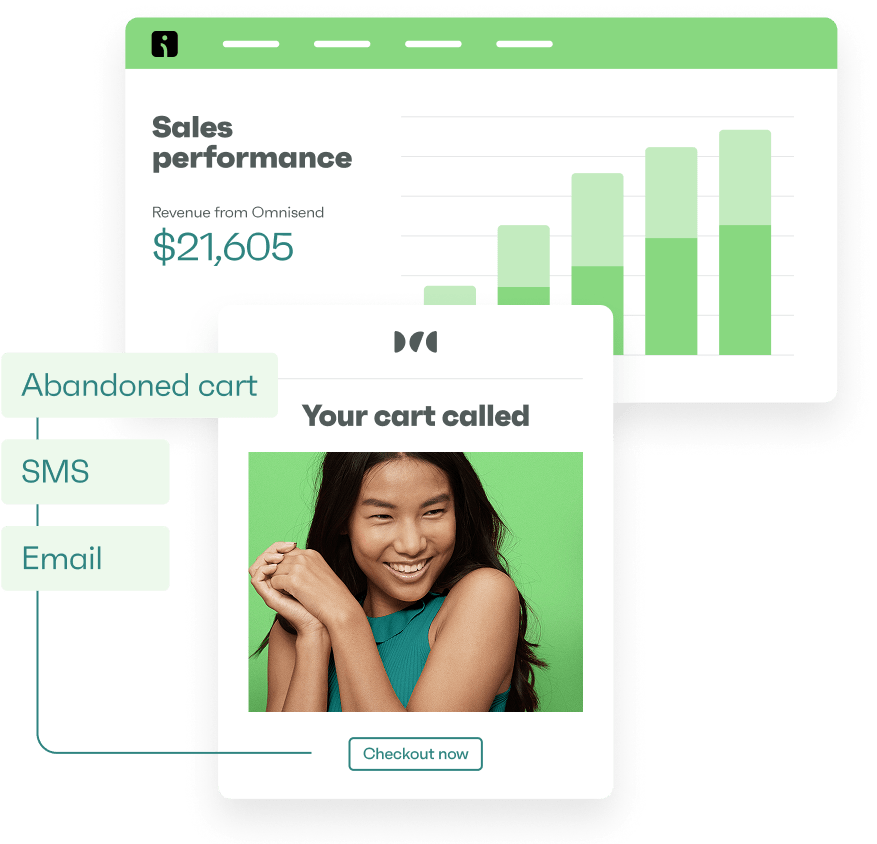Drive sales on autopilot with ecommerce-focused features
See FeaturesIf you feel like everyone you know has a side hustle, you’re not wrong. What used to be a niche way to earn extra cash has become a massive, multi-billion-dollar part of the global economy.
Our report from last year showed that online sales were the main driving force behind the side hustle economy. To track how that trend has evolved, our new survey this year of more than 4,000 people across the US, the UK, Canada, and Australia digs into specifics: why people start, what they’re doing, how much time they dedicate, and what they actually earn.
The results are clear: side hustles remain a fast-growing part of modern work culture, and ecommerce is right at the heart of it.
Key findings
- Around 27.4% of adults across all four countries currently have a side hustle
- The main motive isn’t passion, it’s money: 62% cite extra income as their primary reason
- Nearly half (48.2%) of all side hustlers sell products online, with Amazon being the most popular marketplace
- Of those with an ecommerce side gig, 64% are selling on peer-to-peer (P2P)
platforms like Depop, Facebook Marketplace, Poshmark, and Vinted - A significant 35.1% of all respondents started their side hustle within the last six months, suggesting that recent job-market uncertainty may drive more people to seek extra income through side gigs
- The majority keep it manageable: 72.4% spend less than 10 hours weekly on their side gig
- Most (60.3%) earn modest amounts, up to $500 per month, but collectively, this adds up to billions of dollars
Why people are turning to side gigs
It’s not just a feeling – a significant portion of the population is actively earning money outside of a traditional 9-to-5. Our survey found that 31.1% in the US, 27.7% in the UK, and 25.1% in both Canada and Australia report currently having a side hustle.
Gen Z stands out as the most active generation in the side hustle economy. In the US, an impressive 47.1% of 18-24 year-olds report having one, compared to 37.3% in the UK, 44.3% in Canada, and 41.5% in Australia.
When asked why, most point directly to financial reasons. Earning extra income (cited by 60% in the US, 64.9% in the UK, 59.4% in Canada, and 64.4% in Australia) and offsetting rising living costs are the top drivers.
Passion projects take a back seat. Only 13.8% in the US and UK, 16.5% in Canada, and 12.2% in Australia started their side gig, hoping to turn a hobby into a business.
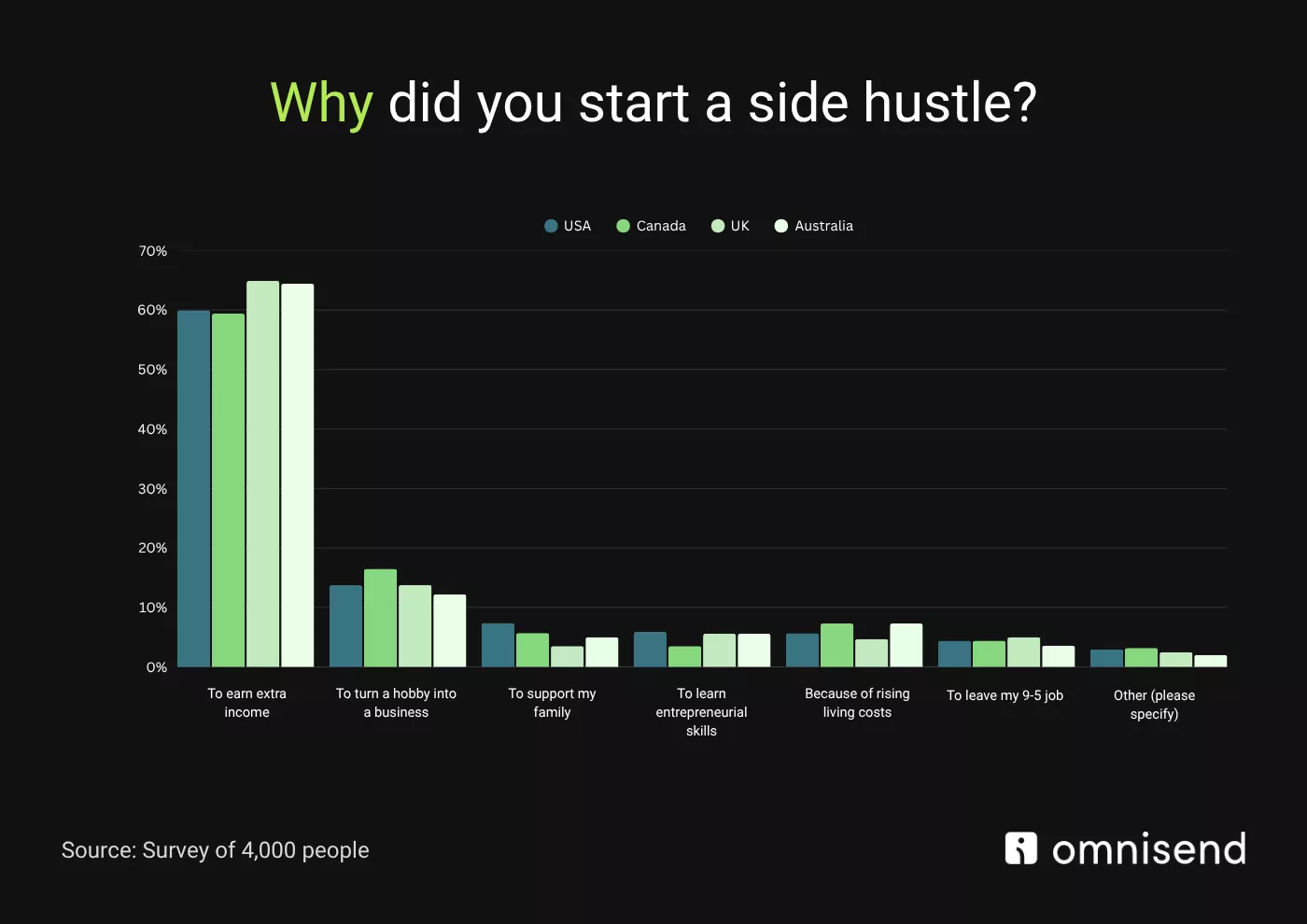
Economic uncertainty fuels a new wave of side hustles
The timing is also telling. Around half of all respondents started their side hustle within the last year. This trend appears to be accelerating, with 35.1% (globally) starting in just the last six months. This suggests that recent job market uncertainty, marked by stalling US job growth, may be pushing more people to create their own income streams rather than wait for more stable employment.
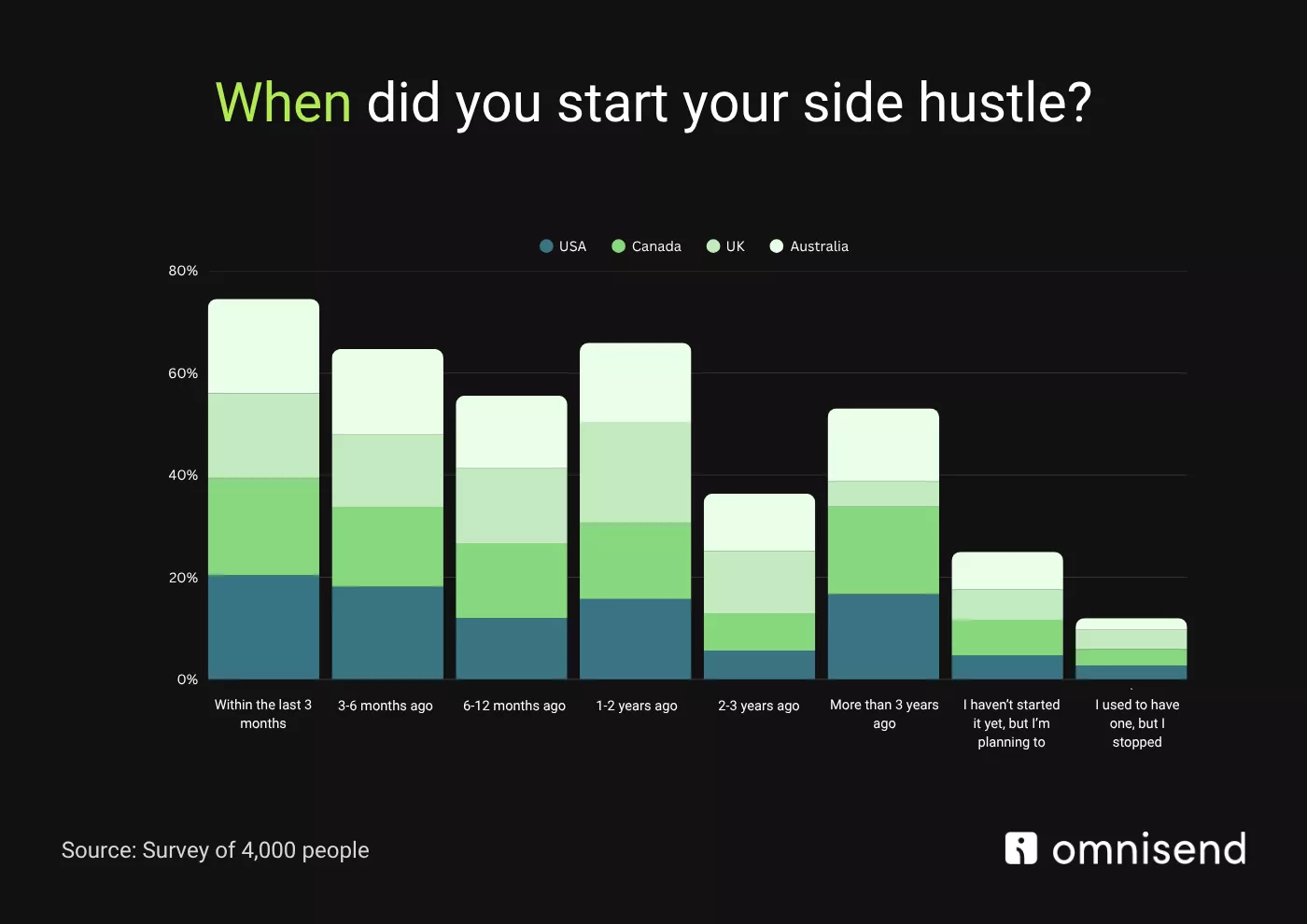
“The timing suggests that weak job growth is pushing people to look for ways to stay financially secure – especially after the reintroduction of tariffs,” says Marty Bauer, Ecommerce Expert at Omnisend. “Add higher prices on top of worse job security, and side hustles become a financial necessity”.
Ecommerce remains one of the most popular side hustles
If last year showed us that online sales were surging, this year proves it’s no passing trend.
Selling physical or digital products online remains one of the most common side gigs. In fact, 44% in the US, 56.7% in the UK, 47.9% in Canada, and 45.2% in Australia report having an ecommerce store.
Amazon remains the top marketplace in each country, preferred by 52.3% of Americans, 50.3% of Brits, 44.4% of Canadians, and 43% of Aussies. Among these online sellers, the top product categories include:
- Handmade or custom goods (36%)
- Vintage or secondhand items (34%)
- Print-on-demand products (31%)
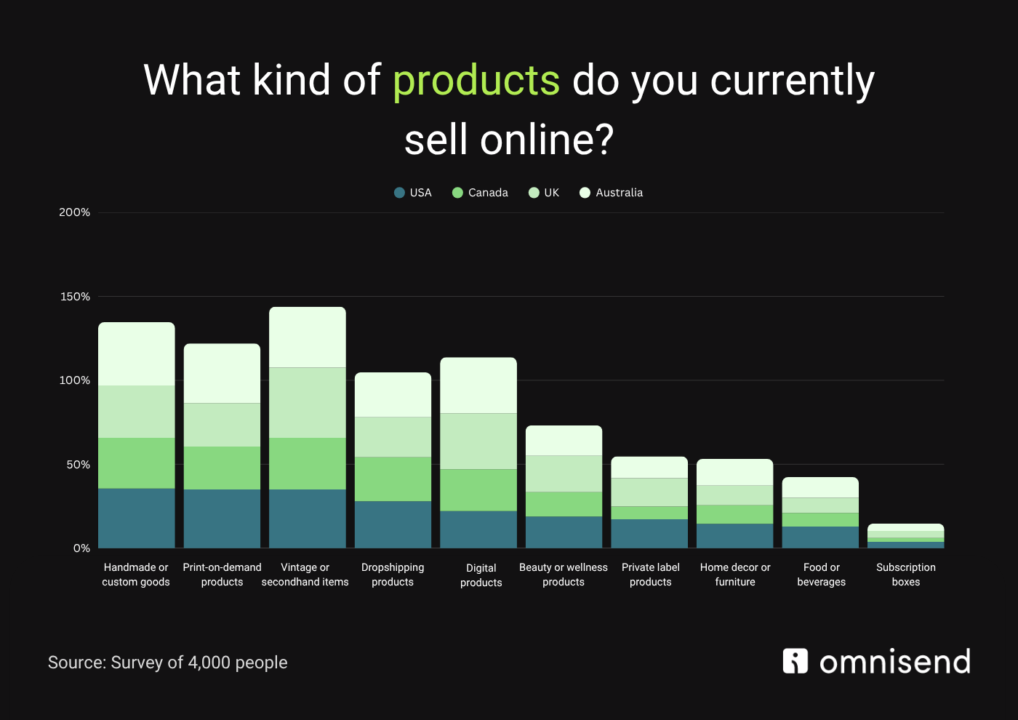
Beyond traditional ecommerce, reselling on peer-to-peer marketplaces is even more widespread.
Platforms like Depop, Facebook Marketplace, Poshmark, and Vinted are currently used by 57.9% of ecommerce side hustlers in the US, 70.5% in the UK, 69.7% in Canada, and 67.1% in Australia.
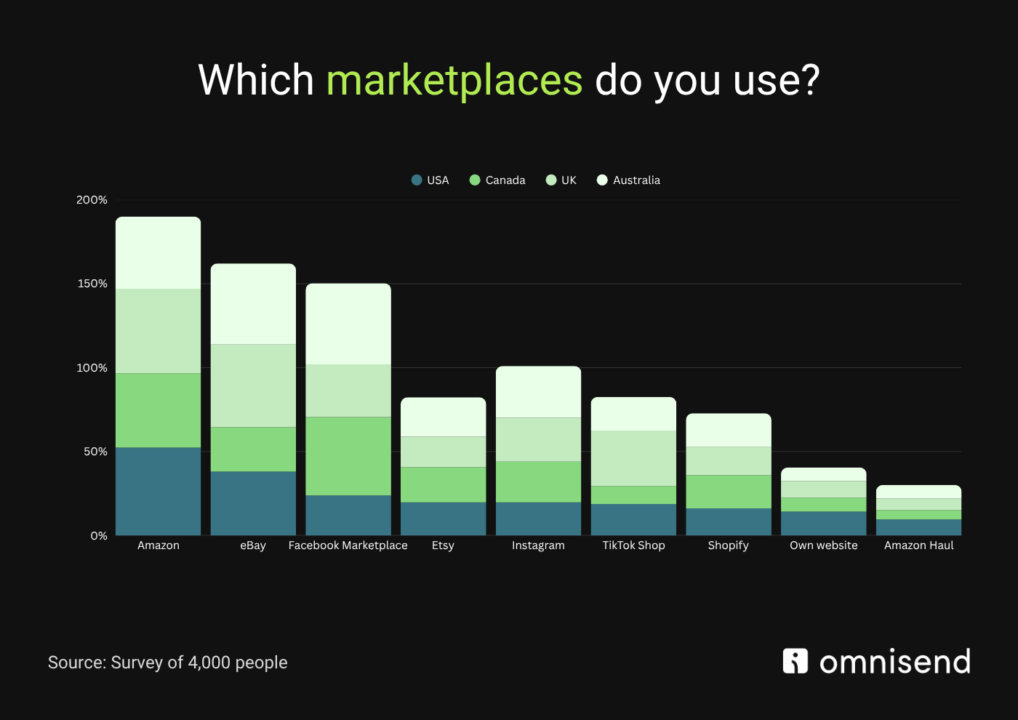
The P2P market is generating staggering amounts. Our research shows that the monthly income of those reselling items online climbs to $25B in the US, £12.5B in the UK, $10.2B in Canada, and $7.8B in Australia.
According to Bauer, the low barrier to entry is a key factor. “Marketplaces like Amazon or eBay make it easy for anyone to turn their creativity into profit, often without needing upfront investment or deep technical expertise. But with thousands of new sellers entering these marketplaces every day, success now requires a level of commitment that goes far beyond a casual side project.”
He adds, “Peer-to-peer platforms lower the barrier even further, marketing themselves as less professional and even more low-pressure. And since most are framed around sustainability and reuse, many just upload what they have – often without even thinking of it as a side hustle.”
The work and the payoff
For most people, a side hustle is just that — something on the side. They typically keep their side hustles manageable.
The vast majority dedicate less than 10 hours per week (65.2% in the US, 74.7% in the UK, 75.4% in Canada, and 77.3% in Australia). Only a small fraction (14.6% in the US, 7.6% in the UK) dedicate more than 20 hours per week.
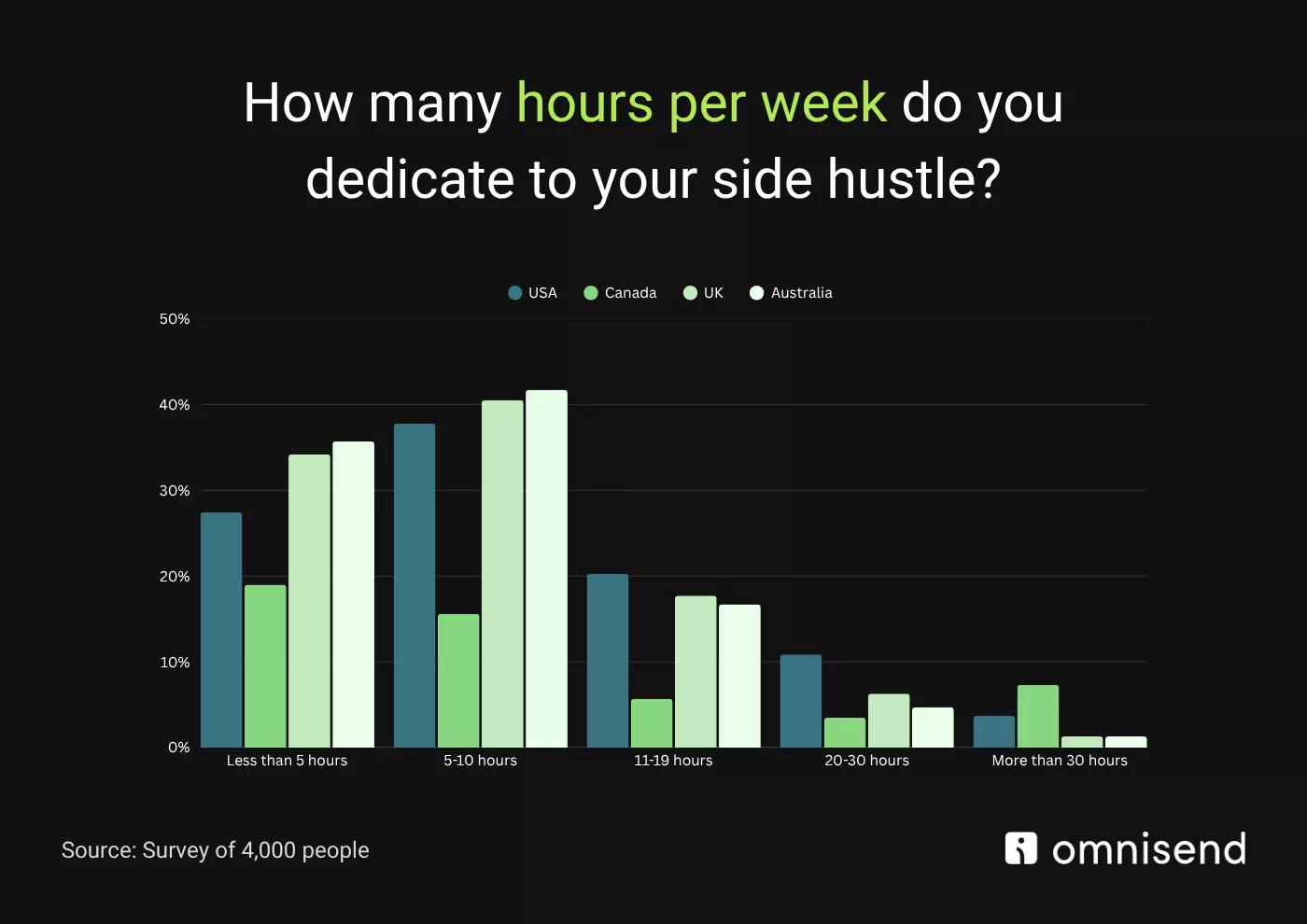
Earnings vary widely, but they provide a meaningful financial cushion. The majority (61.7% of Americans, 56.3% of Brits, 61.7% of Canadians, and 61.3% of Aussies) report making up to $500 monthly after taxes. A smaller, successful group earns more than $1,000 monthly (19.5% in the US, 27.9% in the UK, 16% in Canada, 20.7% in Australia).
When added up, this extra income is colossal. It accounts for an estimated $83.1B in the US, £29.26B in the UK, $21.5B in Canada, and $14.3B in Australia in extra monthly income alone.
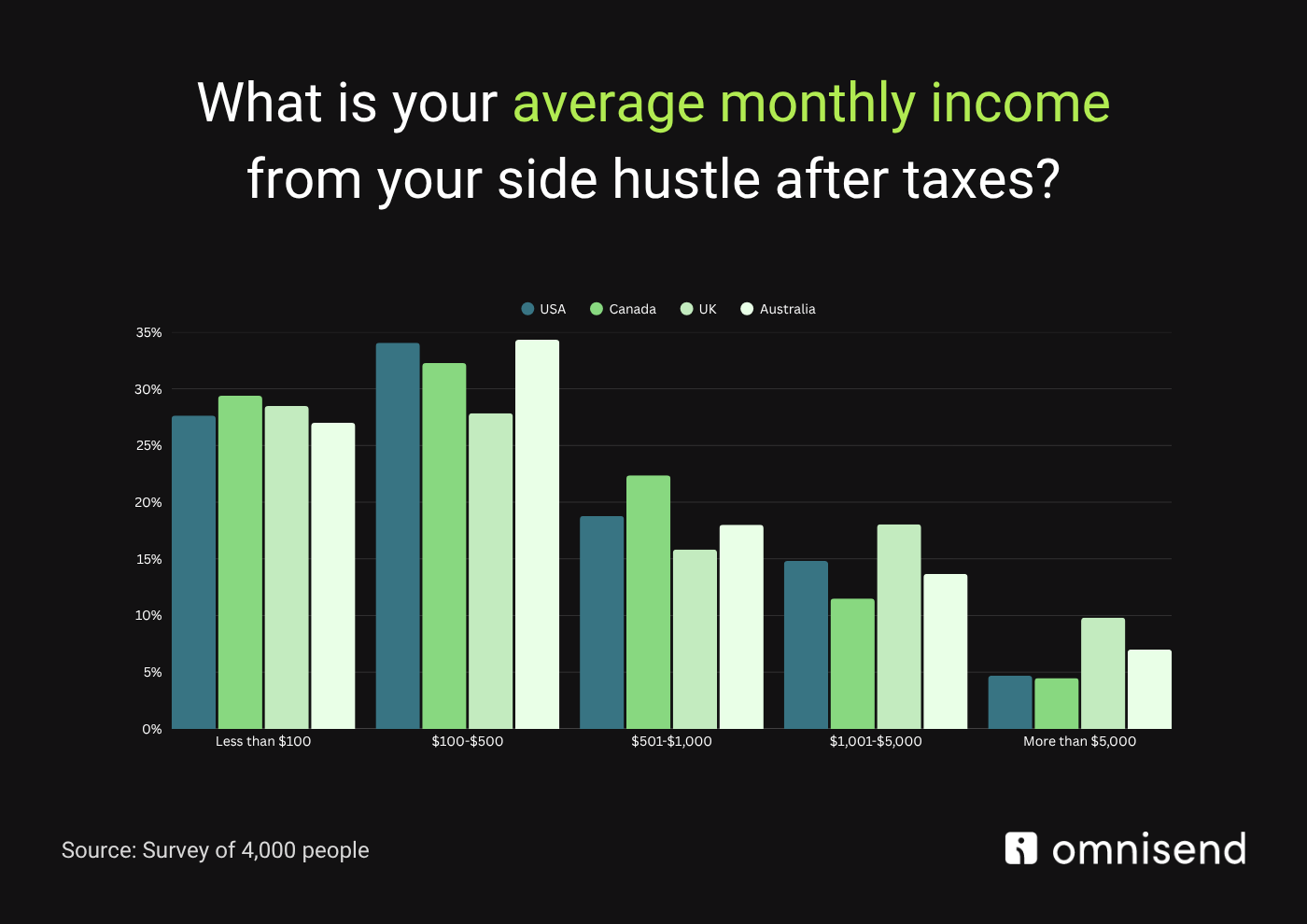
“Spending a few hours weekly and bringing in solid money is impressive. For many, this isn’t about passion or entrepreneurship,” says Bauer. “The fact that thousands rely on a side gig to cover basic expenses makes it clear that regular wages often aren’t enough to keep up.”
What it all means
The side hustle is no longer a nice-to-have project for a bit of fun. It’s a fast-growing, multi-billion-dollar pillar of the modern economy, built on the back of accessible ecommerce platforms and driven by apparent financial necessity.
As people look for ways to weather economic uncertainty and cover the rising cost of living, they are overwhelmingly turning to digital and P2P marketplaces to create their own financial stability. It’s a massive shift in work culture, and it’s happening in just a few extra hours per week.
TABLE OF CONTENTS
TABLE OF CONTENTS


No fluff, no spam, no corporate filler. Just a friendly letter, twice a month.

 OFFER
OFFER







